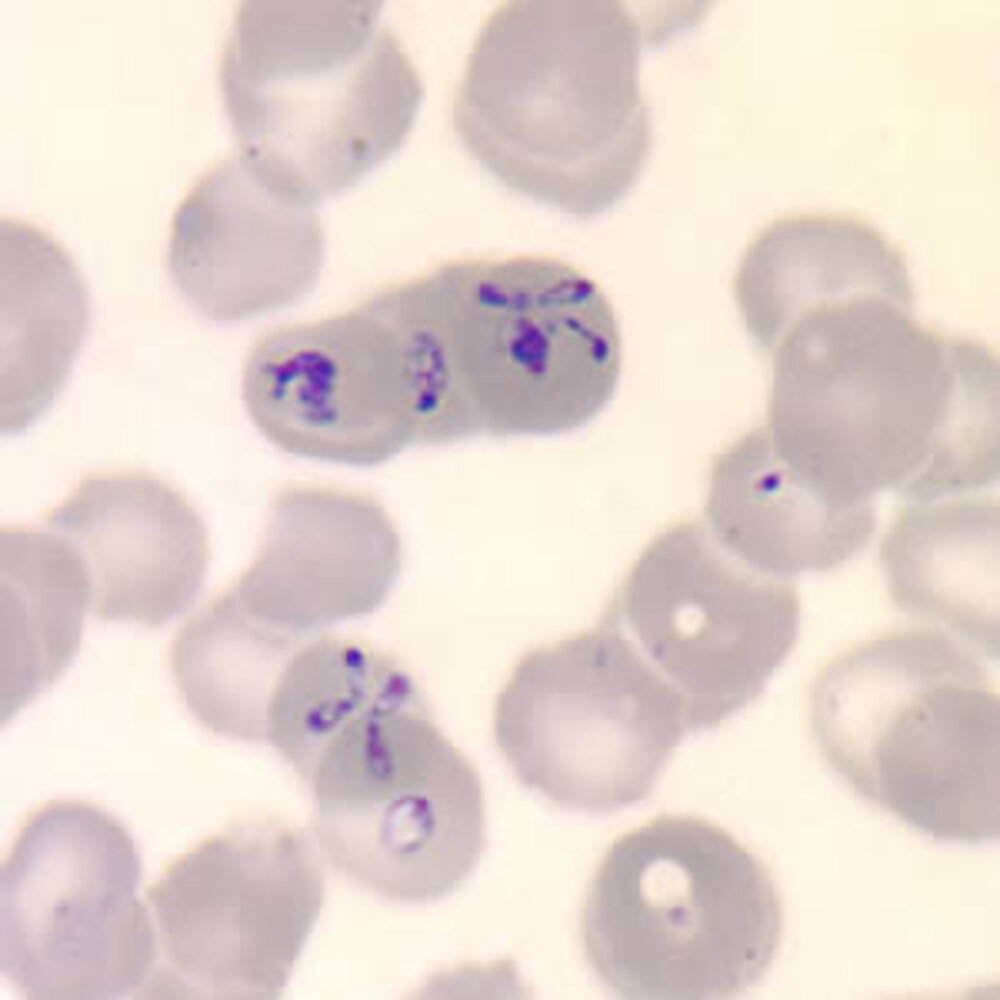Epidemiology
Etiology
- Pathogen: Babesia species (e.g., Babesia microti)
- Vector: deer tick (Ixodes scapularis)
- Ticks are often coinfected; therefore, patients with babesiosis often also have Lyme disease.
- Distribution
- In the US, B. microti causes endemic disease in midwestern (especially Minnesota and Wisconsin) and northeastern states.
- Risk factors for severe babesiosis
Pathophysiology
Clinical features
- Fever and other flu-like symptoms
- Anorexia
- Nonproductive cough
- Dark urine, jaundice from hemolytic anemia
- Mild splenomegaly and/or hepatomegaly
- Gastrointestinal symptoms (e.g., nausea, vomiting, abdominal pain)
- Typically no rash; may have petechiae, ecchymoses
Diagnostics
- CBC: ↓ hematocrit, thrombocytopenia, ↑ reticulocyte count
- Modalities
- Peripheral blood smear showing Babesia as intraerythrocytic rings and/or Maltese cross

- Detection of Babesia DNA on a blood sample (e.g., PCR)
Treatment
